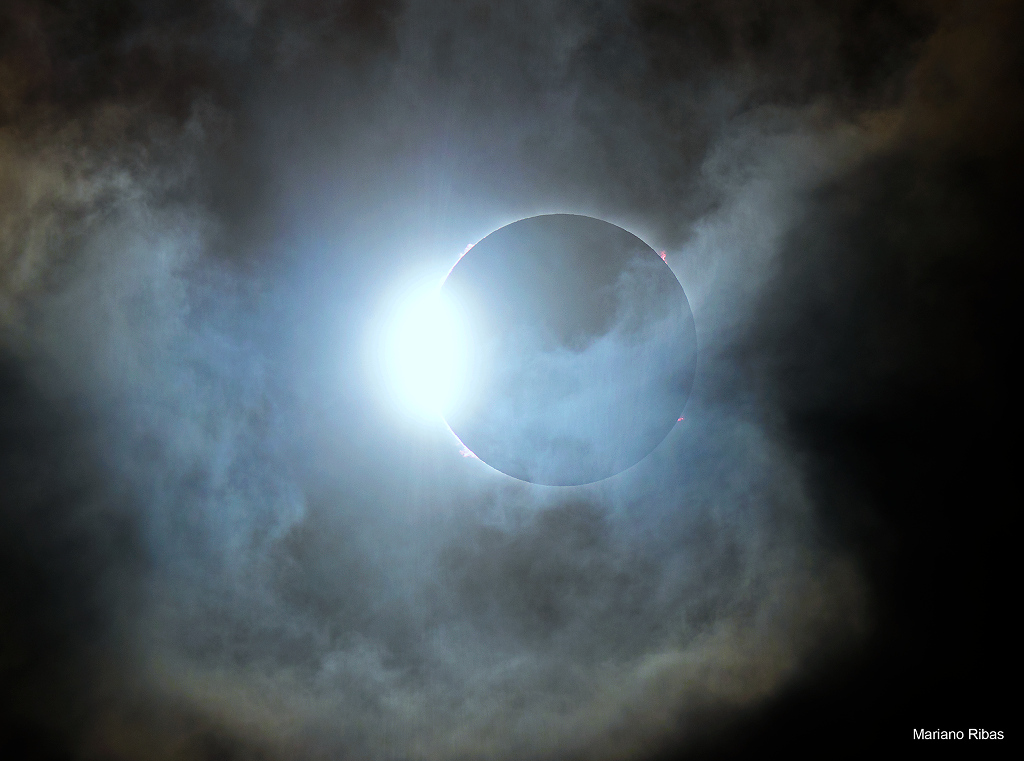2020 December 29
Video Credit: GOES-16, ABI, NOAA, NASA
Explanation: What does the Earth look like during a total solar eclipse? It appears dark in the region where people see the eclipse, because that's where the shadow of the Moon falls. The shadow spot rapidly shoots across the Earth at nearly 2,000 kilometers per hour, darkening locations in its path -- typically for only a few minutes -- before moving on. The featured video shows the Earth during the total solar eclipse earlier this month. The time-lapse sequence, taken from a geostationary satellite, starts with the Earth below showing night but the sun soon rises at the lower right. Clouds shift as day breaks over the blue planet. Suddenly the circular shadow of the Moon appears on the left and moves rapidly across South America, disappearing on the lower right. The video ends as nightfall begins again. The next total solar eclipse will occur next December -- but be visible only from parts of Antarctica.







